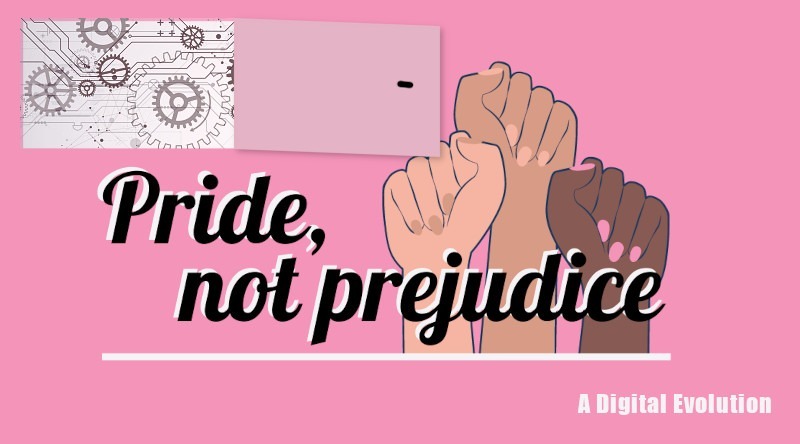The start of it all
It was 2020, the year of bread-making, Tiktoking, and people generally jittering with restlessness from staying home. A key social element in the maker community are craft & vendor shows. Of course, all of those had been cancelled but we wondered what we could do to bring the community together online. The virtual show concept had already started to emerge but was still in its fledgling phase- we had ideas. We? The combined experience and knowledge of the established Ottawa maker Ifs, Ands, or Buttons, and boutique software designer Planetjon.
We didn’t want to create just a cohesive online market, our vision extended to being progressive and LGBTQ+ inclusive, a welcome place for activism, feminism, reclaimism, and general social justice awareness. We would welcome products that in-person shows had considered too spicy, we would enable vendors that might find in-person shows to have difficult hurdles. We would build… Pride, Not Prejudice – Craft and Community Fair.
This is my retrospection on the technology aspect of Pride, Not Prejudice and how it evolved to meet the challenges that we encountered.
Our process from start to finish
As a virtual show, we opted for a 4 day online shop format. I chose WordPress + WooCommerce as the underlying software for providing a website and marketplace. Planetjon is quite familiar with WordPress.
The site was up and running in no time but unlike an in-person show, there are a few more steps involved in managing a virtual show, from preparation to conclusion.
Collecting the data
To prepare the online store, we first had to collect item listings from our vendors. WooCommerce has a CSV template that can be used for quick bulk import. We decided that ask vendors to use a minimal version of this, omitting many of the unnecessary fields. To receive images, we asked vendors to use WeTransfer, a large file transfer service with a free tier. We also asked vendors to fill out a Google Form answering questions about their profile, initiative, and background. This got entered into a Google spreadsheet.
Loading the data
Once we’d received a vendor’s listings CSV and WeTransfer package, we loaded their profile and listings data into our store and then manually fine-tune each listing, adding the appropriate images and relevant metadata.
Invoicing
On conclusion of the show, I ran a database query to provide me with a master sales sheet, sorted by vendor and aggregated by item and order. I then had to slice this up in Excel and manually email each vendor with their piece of the sales info so that they would know what to send us.
I generated a further aggregated report, summing sales and omitting sale items, for our use to know how much to pay each vendor.
Fulfillment
Once the event ended, vendors had to bundle their sold items by shopper and deliver all bundles to our operation base.
We had a tight turnaround to consolidate all item bundles per shopper and get those shipped or delivered to affiliate pickup points. Waiting for all items to be delivered would have wasted precious time. I used an Excel spreadsheet to flag which vendors had fulfilled their sold items, and compute which orders could be consolidated. This allowed us to begin packaging orders almost immediately.
Packing orders was always done over a weekend (barring vendor delays) with helping hands and pizza. It sure was rewarding to watch the transformation from huge chaos of items spilling to orderly stashes of packages.
Shipping & pickup points
The final major step of the show was to prepare shipping labels for orders being shipped, and drop off local pickup orders to our affiliate pickup points.
What we learned
Our first event was very much rolled out by the seat of our pants. We ran it, sold many shiny things, and got the items to the shoppers. That was one half; I described the operation behind the scenes as hectic and grueling.
We felt that the energy was positive, the thrill was undeniable. To run a subsequent online fair, we knew that many things had to be tweaked to improve our efficiency as well as the experience of both shoppers and vendors.
How could we improve the data loading process? How could vendor listings preparation be easier for vendors? What would live data reports look like? Would a faster order packing process be possible? These were questions that we asked ourselves.
For the scope of this series, I will discuss the improvements by purpose rather than chronological order.
Next in the series, Introducing The Data Processing Pipeline
Editor’s note
Pride, Not Prejudice is an online craft & community fair for the socially conscious, curated & managed by Ifs, Ands, or Buttons.

